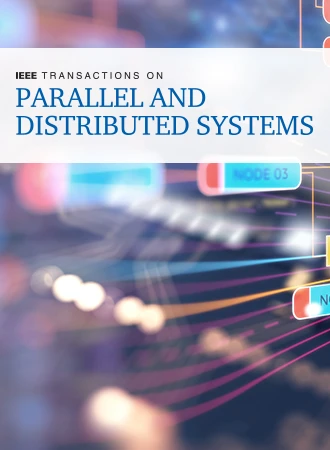Task-Aware Service Placement for Distributed Learning in Wireless Edge Networks
IF 5.6
2区 计算机科学
Q1 COMPUTER SCIENCE, THEORY & METHODS
IEEE Transactions on Parallel and Distributed Systems
Pub Date : 2025-02-10
DOI:10.1109/TPDS.2025.3539620
引用次数: 0
Abstract
Machine learning has been a driving force in the evolution of tremendous computing services and applications in the past decade. Traditional learning systems rely on centralized training and inference, which poses serious privacy and security concerns. To solve this problem, distributed learning over wireless edge networks (DLWENs) emerges as a trending solution and has attracted increasing research interests. In DLWENs, corresponding services need to be placed onto the edge servers to process the distributed tasks. Apparently, different placement of training services can significantly affect the performance of all distributed learning tasks. In this article, we propose TASP, a task-aware service placement scheme for distributed learning in wireless edge networks. By carefully considering the structures (directed acyclic graphs) of the distributed learning tasks, the fine-grained task requests and inter-task dependencies are incorporated into the placement strategies to realize the parallel computation of learning services. We also exploit queuing theory to characterize the dynamics caused by task uncertainties. Extensive experiments based on the Alibaba ML dataset show that, compared to the state-of-the-art schemes, the proposed work reduces the overall delay of distributed learning tasks by 38.6% on average.无线边缘网络中分布式学习的任务感知服务布局
在过去的十年中,机器学习一直是巨大的计算服务和应用程序发展的推动力。传统的学习系统依赖于集中的训练和推理,这带来了严重的隐私和安全问题。为了解决这一问题,无线边缘网络上的分布式学习(DLWENs)成为一种趋势解决方案,并引起了越来越多的研究兴趣。在dlwen中,需要在边缘服务器上放置相应的服务来处理分布式任务。显然,训练服务的不同放置会显著影响所有分布式学习任务的性能。在本文中,我们提出了一种用于无线边缘网络分布式学习的任务感知服务放置方案TASP。通过仔细考虑分布式学习任务的结构(有向无环图),将细粒度的任务请求和任务间依赖关系纳入到部署策略中,实现学习服务的并行计算。我们还利用排队理论来表征由任务不确定性引起的动态。基于阿里巴巴机器学习数据集的大量实验表明,与最先进的方案相比,所提出的工作平均减少了分布式学习任务的总体延迟38.6%。
本文章由计算机程序翻译,如有差异,请以英文原文为准。
求助全文
约1分钟内获得全文
求助全文
来源期刊

IEEE Transactions on Parallel and Distributed Systems
工程技术-工程:电子与电气
CiteScore
11.00
自引率
9.40%
发文量
281
审稿时长
5.6 months
期刊介绍:
IEEE Transactions on Parallel and Distributed Systems (TPDS) is published monthly. It publishes a range of papers, comments on previously published papers, and survey articles that deal with the parallel and distributed systems research areas of current importance to our readers. Particular areas of interest include, but are not limited to:
a) Parallel and distributed algorithms, focusing on topics such as: models of computation; numerical, combinatorial, and data-intensive parallel algorithms, scalability of algorithms and data structures for parallel and distributed systems, communication and synchronization protocols, network algorithms, scheduling, and load balancing.
b) Applications of parallel and distributed computing, including computational and data-enabled science and engineering, big data applications, parallel crowd sourcing, large-scale social network analysis, management of big data, cloud and grid computing, scientific and biomedical applications, mobile computing, and cyber-physical systems.
c) Parallel and distributed architectures, including architectures for instruction-level and thread-level parallelism; design, analysis, implementation, fault resilience and performance measurements of multiple-processor systems; multicore processors, heterogeneous many-core systems; petascale and exascale systems designs; novel big data architectures; special purpose architectures, including graphics processors, signal processors, network processors, media accelerators, and other special purpose processors and accelerators; impact of technology on architecture; network and interconnect architectures; parallel I/O and storage systems; architecture of the memory hierarchy; power-efficient and green computing architectures; dependable architectures; and performance modeling and evaluation.
d) Parallel and distributed software, including parallel and multicore programming languages and compilers, runtime systems, operating systems, Internet computing and web services, resource management including green computing, middleware for grids, clouds, and data centers, libraries, performance modeling and evaluation, parallel programming paradigms, and programming environments and tools.
 求助内容:
求助内容: 应助结果提醒方式:
应助结果提醒方式:


